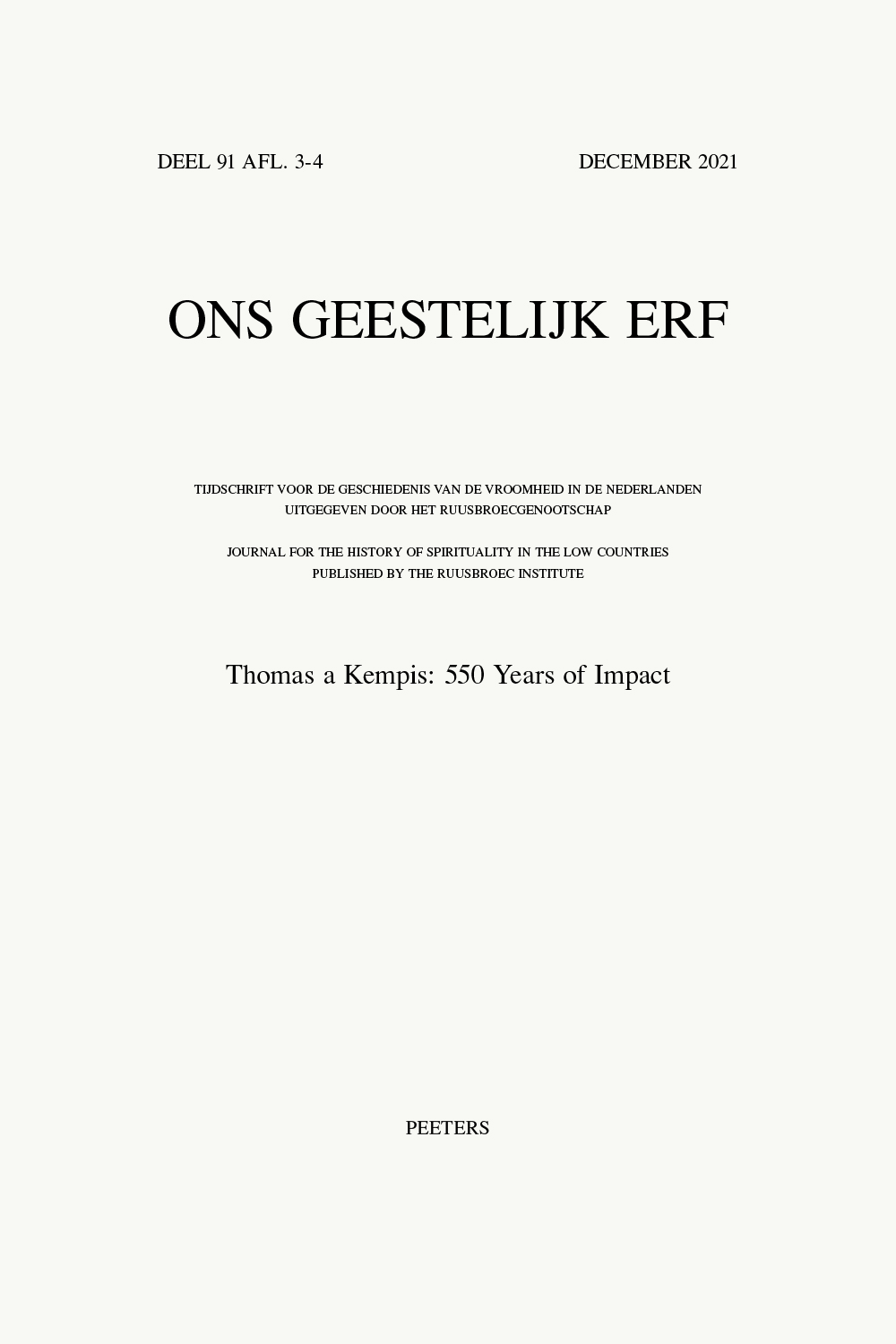 previous article in this issue previous article in this issue | next article in this issue  |

Preview first page |
Document Details : Title: 'Refuterende de vermaledide Lutersce secte' Subtitle: De Antwerpse franciscanen als strategen in Anna Bijns' literaire strijd tegen Maarten Luther Author(s): KESSLER, Judith Journal: Ons Geestelijk Erf Volume: 85 Issue: 4 Date: 2014 Pages: 267-291 DOI: 10.2143/OGE.85.4.3071293 Abstract : When Reformation came to the Netherlands in the early sixteenth century, it was mostly not received very well. For example, the famous Augustine preacher Jacobus Praepositus had to leave Antwerp after only a few years of preaching about Luther’s doctrine to the Dutch people, because he had to escape religious persecution. It should last until 1566, when the brute force of the Calvinist iconoclasm struck Antwerp, before protestants had enough power to rule the metropolis. It is often said (e.g. by Judith Pollmann) that the success of the Calvinists especially in Antwerp has much to do with a passive attitude of the Catholics, based on the decay of the church: the clerics only worked for their own benefit and they did not guide the people in how to face the new doctrine. However, this generalizing picture Pollmann c.s. show is not entirely correct. Especially in Antwerp there are some outstanding persons, a lay person and clerics, who work together to protect the Catholics against Luthers doctrine. In my article, I show how the Antwerp Franciscans and the poetess Anna Bijns joined their forces. Bijns wrote fierce poems against Luther in the vernacular and in the very popular manner of the rethorician literature. Thanks to the prominent Franciscans Matthias Weynsen and Henrick Pippinck Bijns’ poems were published in three anthologies. The kind of support these Franciscans could give to Bijns and the reason for publishing a woman’s literary works are the most important aspects of my article, showing at the end why the collaboration between a lay person and clerics was just the best decision to give the readers a strong hand in facing Luther in the 1520’s and to give them hope when forty years later the iconoclasm had destroyed all catholic Antwerp. |
|


